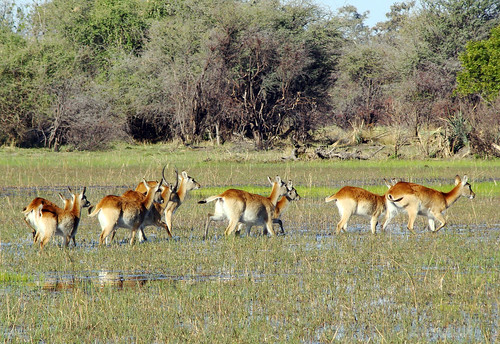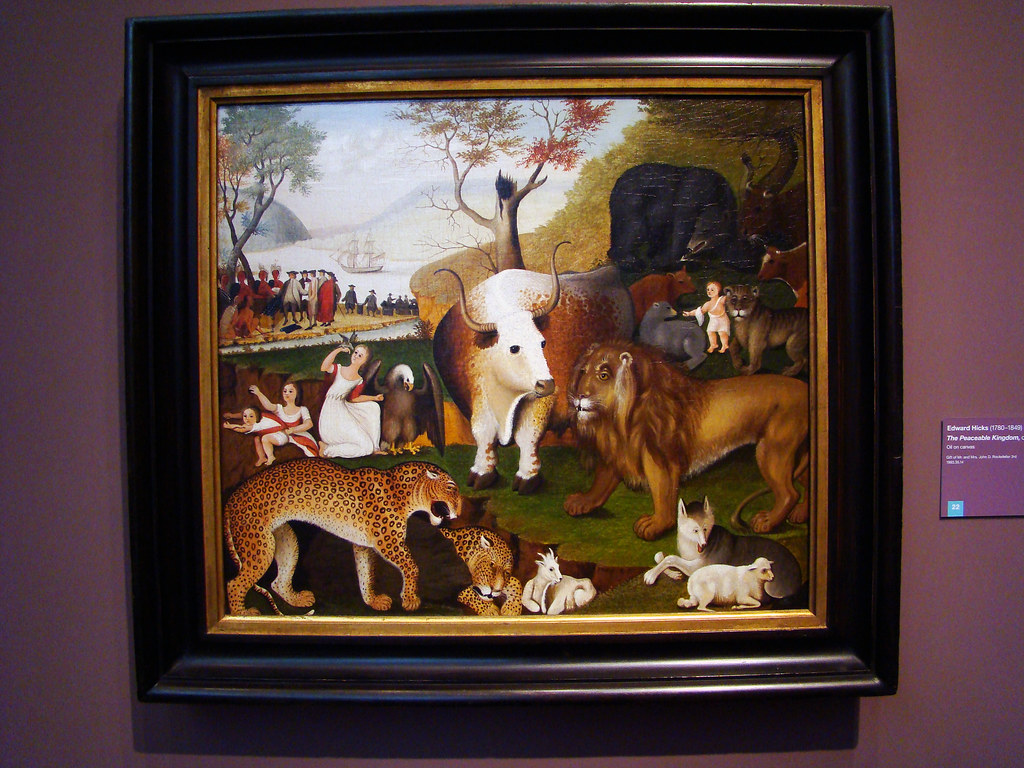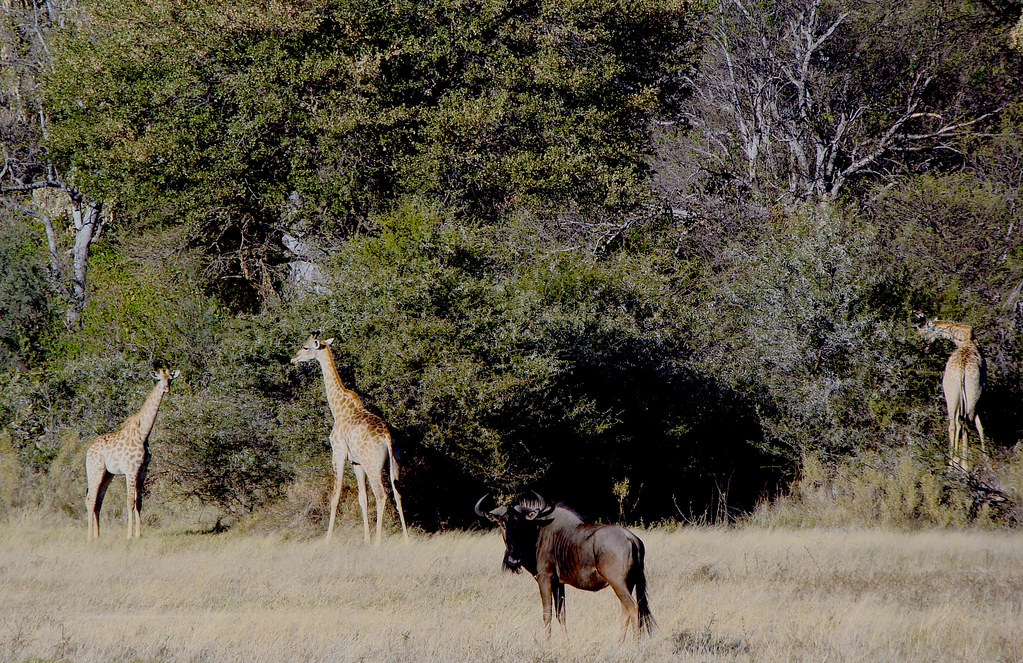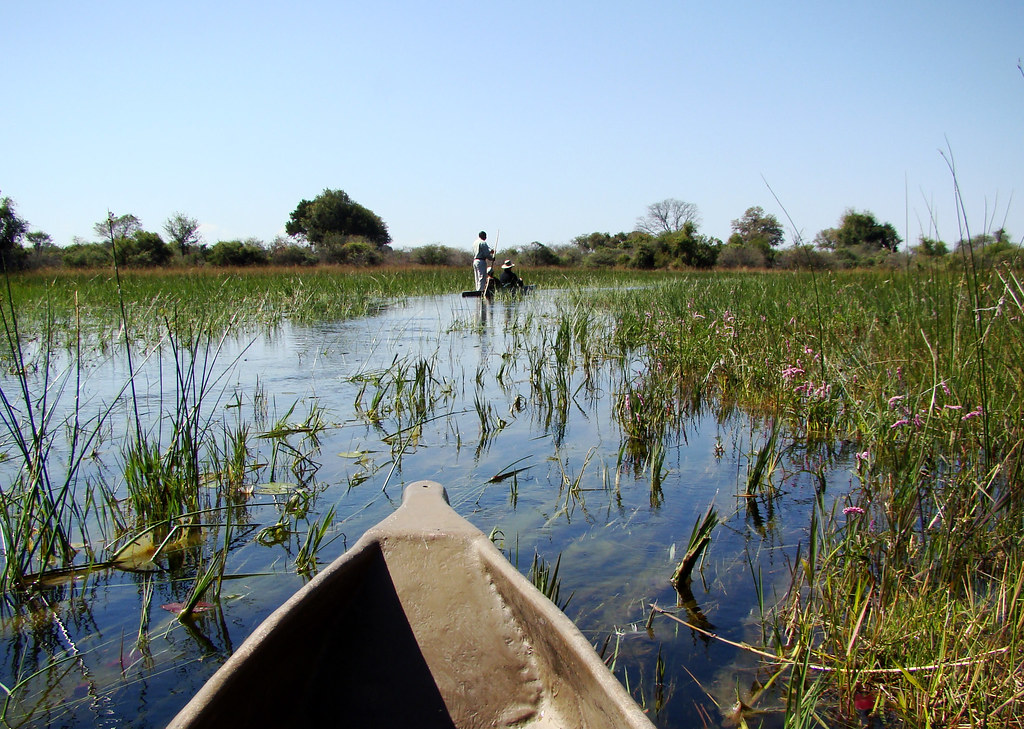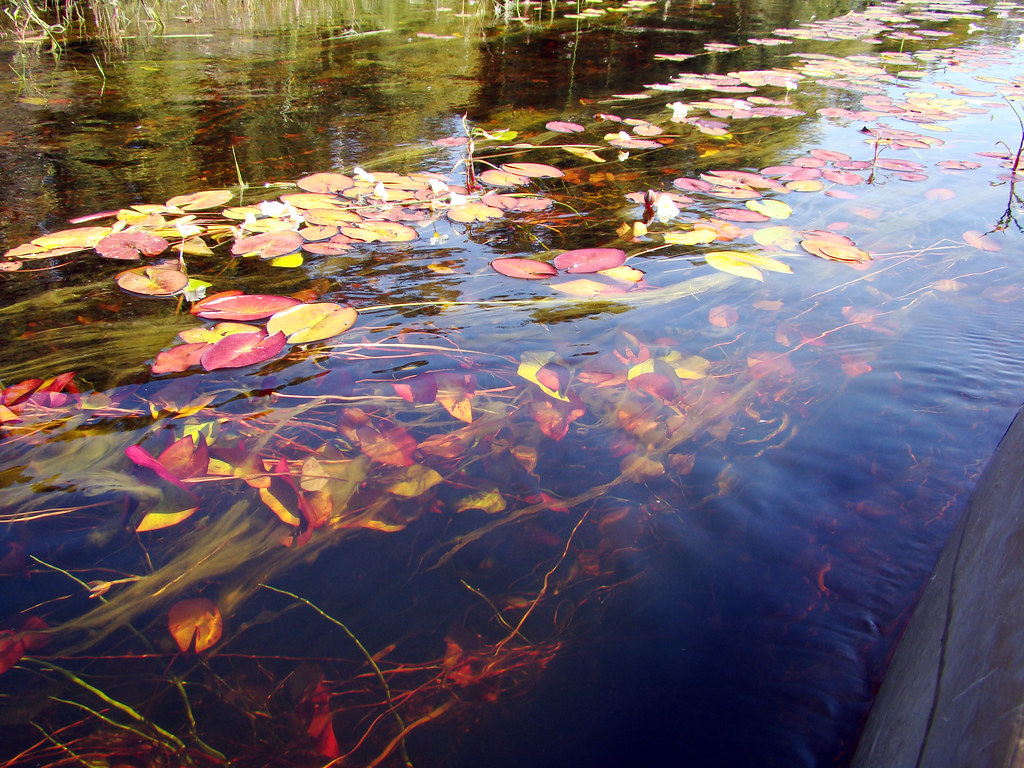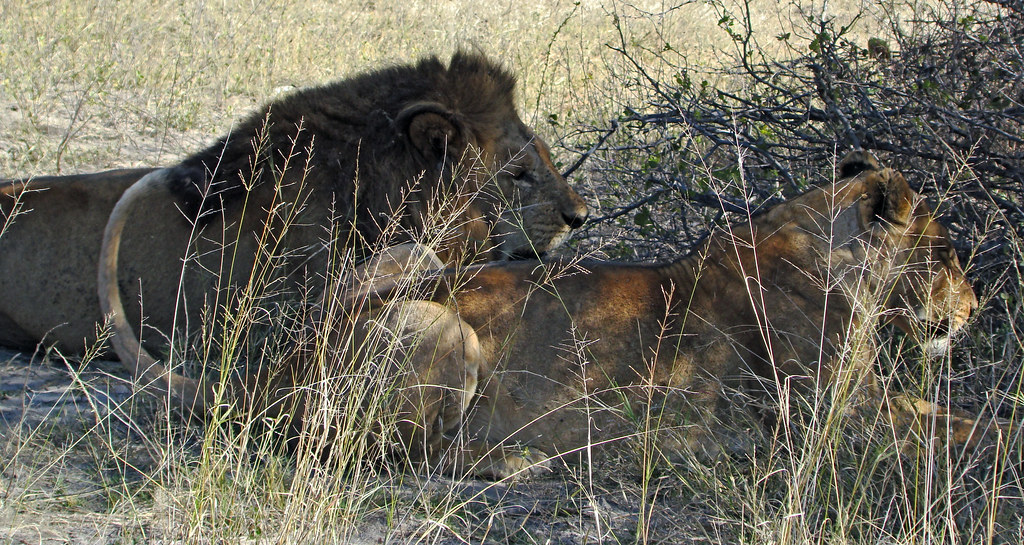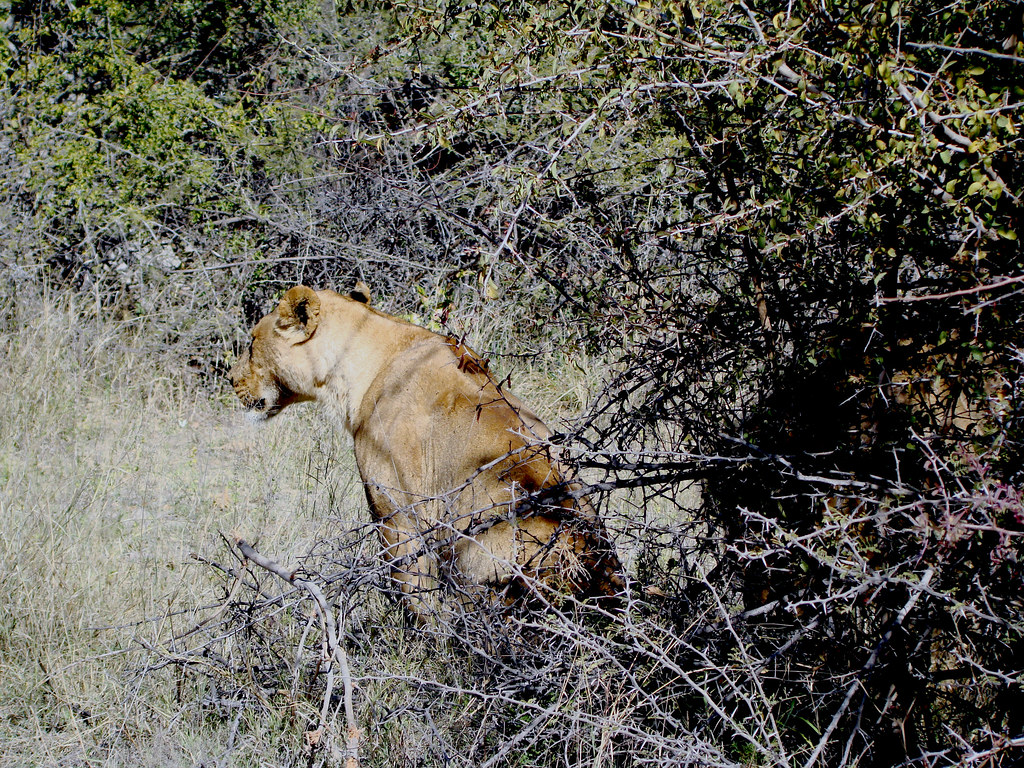 |
| South African Giraffe (Giraffa camelopardalis giraffa) |
Some of our fondest memories of our trip to Botswana in the summer of 2009 were the times we encountered the gentle South African Giraffe. I forget who in our Landcruiser spotted the chestnut-brown and buff fur through the trees of the African savanna on first morning at Stanley’s Camp.
Our guide, Poniso, immediately stopped the car and we quietly waited to see if this giraffe will reveal herself. Within a minute of motionless silence, this giraffe cow stepped out of the camouflage of the acacia tree into the open as if to admit defeat in a game of hide and seek. We were taken by her beauty and couldn’t believe our good fortune as we viewed her through our camera lenses. When our shutters stopped snapping, Poniso whispered to us that she was hiding a calf.
We all quickly scanned the landscape until we finally saw the rump of a small giraffe hidden behind the large tree trunk on the left, below the light spot where an elephant has stripped the bark bare. Click on the photo to see a hint To see this photo in original size click here.
We now understood why this mother stepped out of hiding so quickly; she placed herself in a vulnerable position to protect a calf.
***
Three days later, at Chief’s Camp, we stumbled upon another giraffe cow and calf.
We can’t assume that this is the calf’s mother because chances are good that this cow is watching several calves in a nursery herd while other giraffe cows browse for acacia leaves. The giraffe male does not assist in parental care because would be impossible to defend the vast terrain required to supply the large quantity of food he needs to stay healthy. Without a defined territory, he does not know which calves are his. Thus the female giraffes pool together their resources and form what amounts to a babysitting co-op.
The calf’s tawny brown spots are lighter than an adult’s, giving it an even more endearing appearance. I’m sure you can imagine our muffled squeals of delight when we got a close view of this curious calf.
Happy Mother’s Day to all the mothers who bond together and form a village to raise their young.
 |
| South African (or Southern) Giraffe (Giraffa camelopardalis giraffa) and Red-billed Oxpeckers (Buphagus erythrorhynchus) |
________
Resource:
"Introduction to the Social System of Giraffe (Giraffa Camelopardalis)." Biology @ Davidson. Web. 08 May 2011. <http://www.bio.davidson.edu/people/vecase/Behavior/Spring2004/breedlove/parentalcare.html> .







